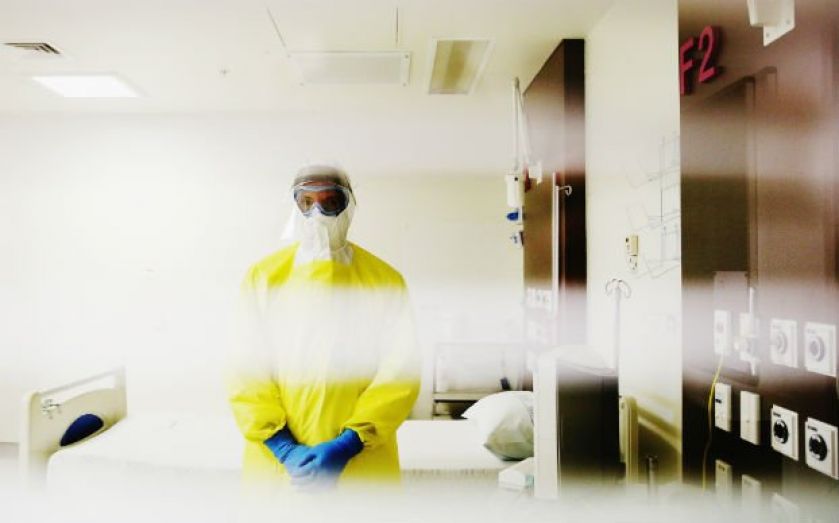Three ways tech is helping fight Ebola using SMS text messages, data and robots

More than one billion dollars is needed to fight the Ebola epidemic in Africa the UN has calculated.
In West Africa where the worst affected countries are located the disease is proving difficult to tackle in the face of widespread poverty and a lack of healthcare.
Beyond the emergency humanitarian aid, health workers and soldiers heading to the region to help manage and treat the deadly disease, technology is also providing a new way to help fight the outbreak.
Text message
The humble SMS may have been usurped by messaging apps in other countries, but it’s a vital way to reach those in affected areas where there are few people with smartphones but many with mobiles.
In Guinea 47 per cent the population has a mobile phone and in Liberia, 52 per cent., and Sierra Leone 48 per cent.
The World Food Programme is using SMS to send public health alerts and communicate with people to gather data on food supplies in affected areas in Guinea and Liberia and plan action needed accordingly.
Unicef too, in collaboration with health ministries in the affected countries, WHO and the Red Cross, are using SMS to spread information about the virus as part of its public health campaign.
Unicef doctor Guido Borghese says: “Most of the people in this part of the world had never heard of Ebola before, In this environment, unfounded fears and rumours spread quickly and widely. More than ever, it is crucial that families have both the means and the right information to protect themselves and prevent dangerous misunderstandings.”
Data
The data collected via SMS and other sources is vital for accurately predicting how the outbreak will develop.
Harvard University’s healthmap aggregates freely available information from eleven different sources, including the World Health Organisation and the International Society for Infectious Diseases.
Taking the data available from the current outbreak combined with information on how disease spreads produces a model that can confidently predict how the outbreak will spread- like this from the Modeling of Biological and Socio-Technical Systems (MOBS) lab at Northeastern University.
For those on the ground, the ability to gather data into useful, usable information quickly is essential.
When Médecins Sans Frontières doctors arrived in Guinea, there were no maps to identify population distribution, and thus where treatment was most needed, New Scientist reports.
Turning to digital mapping organisation Humanitarian OpenStreetMap Team (HOT), In turn, 200 volunteers helped produce a map of Guéckédou where the outbreak is concentrated, plotting 100,000 buildings using satellite imagery
Robots
A robot that kills Ebola? It’s not science fiction but its not quite a cure. US hospitals, including the one where the countries first ebola victim was being treated, are using Dalek-like robots that emit ultraviolet light to kill germs, bacteria and viruses in health facilities. It even kills the Ebola virus if its left lingering on any surfaces- it spreads through bodily fluids but can survive for up to six days.